 Copywriting for websites is not just about writing, it’s more like creating a concept. When creating content for a website a copywriter tries to write impactful statements that have the potential to trigger an emotional response. However, to be effective, impactful words need to be packaged in a striking design.
Copywriting for websites is not just about writing, it’s more like creating a concept. When creating content for a website a copywriter tries to write impactful statements that have the potential to trigger an emotional response. However, to be effective, impactful words need to be packaged in a striking design.
Message and design are the essential elements of content, so at Creative Digital Brain, we try to bring about a proper balance between the two. We endeavour to ensure that the design and message complement each other. With this in mind, we’ve segmented our content development process into the following phases.
- Content conceptualization
- Message composition
- Content conceptualization
Content conceptualisation starts with research, which helps in defining the scope of the message. Next, we ponder about design and try to visualise the most effective design for the message. Layout and theme are a crucial aspect of design, so we try to relate them to the message as closely as possible. This not only makes the design meaningful but also helps in conveying the message most effectively.
Throughout the content conceptualization phase, we try to find answers to some fundamental questions, and our actions are guided by what we learn from this introspection. Typically, we ask ourselves the following questions:
- What is the essence of the message?
- What aspects of the message need highlighting from the audience’s perspective?
- What kind of layout will help in highlighting the critical aspects of the message?
- How to symbolise the essence of the message in the content’s design theme?
Upon completion of the content conceptualization phase, we’ve defined the scope of the message and identified its various components. On the design front, we’ve formed the complete design specifications and earmarked multiple positions on the design template, which will hold the individual parts of the message.
Message composition
In the content conceptualization phase, we only define the scope of the message and identify its components without getting involved in the intricacies of message composition. Since the message is the soul of content, the entire phase two of our content development process is dedicated to the task of message composition.
To deliver the message most effectively, we firmly adhere to the following guidelines:
- Make it as simple as flowing water
- Check for factual and logical errors
- Check for language errors
- Making it as simple as flowing water
A message comprises of a sequence of ideas. So, it is essential to connect the plans and make it easy for the audience to understand how one approach leads to another. In the majority of cases where people fail to comprehend content, the cause of the trouble is the improper sequencing of thoughts and ideas. Sometimes ideas are sequenced correctly, but they are not appropriately interconnected and this creates as much confusion as improperly sequenced ideas. So, we review and re-review our compositions until we are sure that idea transition is as apparent as flowing water.
Checking for factual and logical errors
Factual errors reduce the trustworthiness of content, which is why we take special care to check and cross-check the facts before incorporating them in a message. Logical errors refer to malformed inferences, which result from fallacies in reasoning and deduction. To check for these, we undertake lengthy critical reviews where each point is deeply pondered upon to ensure that it is logically correct.
Checking for language errors
Language errors are not just limited to incorrect spellings, grammar and punctuations – they also include implicational inaccuracy and contextual irrelevancy. Implicational error occurs when a sentence or a paragraph is grossly misunderstood by people, which essentially means that there is a great deal of disparity between what people make of it and what the writer meant by it. Contextual irrelevancy occurs when a word or a phrase doesn’t feel right at its designated position. This leads to some amount of confusion and obstructs the reading flow. At our agency, every piece of composition is subjected to a rigorous group-review, which is very effective for detecting and removing language errors.
Once message composition is done with, all that is left is the simple matter of putting together design and message.








